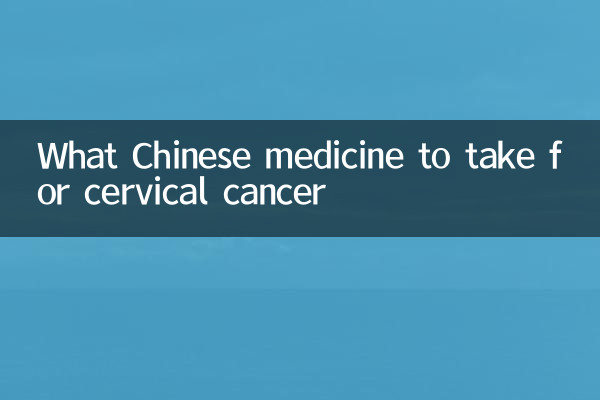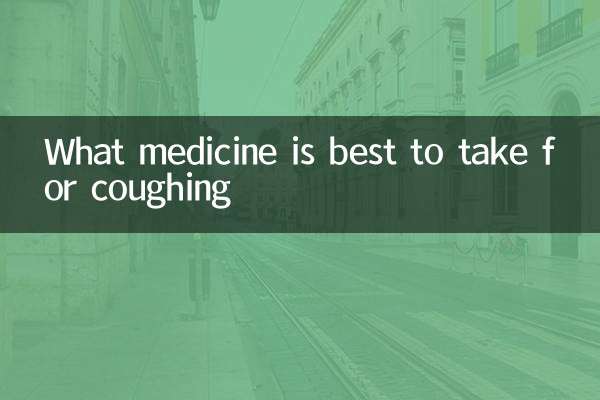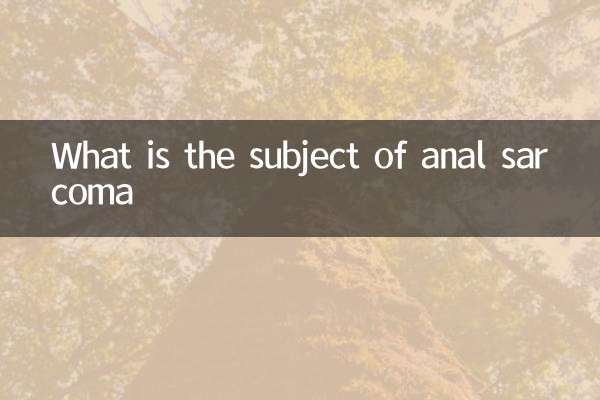What Chinese medicine to take for cervical cancer: Analysis of popular topics across the Internet and suggestions for traditional Chinese medicine conditioning
Recently, the prevention and treatment of cervical cancer has become one of the hot topics on the Internet, especially the traditional Chinese medicine conditioning plan has attracted much attention. This article will combine the popular discussion content in the past 10 days to sort out the traditional Chinese medicine conditioning schemes related to cervical cancer, and provide structured data analysis to help readers scientifically understand the possibility of traditional Chinese medicine auxiliary treatment.
1. Analysis of the popularity of cervical cancer topics across the entire network (in the past 10 days)

| platform | Hot search keywords | Discussion volume | Core concerns |
|---|---|---|---|
| #Cervical Cancer Prevention# | 128,000 | Combination of HPV vaccine with traditional Chinese medicine conditioning | |
| Tik Tok | Anti-cancer Chinese medicine formula | 62,000 | Discussion on the safety of folk remedies |
| Zhihu | Intermediate treatment of cervical cancer | 34,000 | Comparison of the efficacy of combining traditional Chinese and Western medicine |
| B station | Traditional Chinese Medicine Anti-cancer Documentary | 19,000 | Real case sharing |
2. Cervical cancer conditioning plan from the perspective of traditional Chinese medicine
According to the latest "Traditional Medicine Diagnosis and Treatment Guidelines" released by the Chinese Academy of Traditional Chinese Medicine, cervical cancer belongs to the category of "stricken diseases" and "spermia" in traditional Chinese medicine theory, and is mostly related to liver depression and spleen deficiency and damp heat. The following are clinically proven auxiliary conditioning regimens:
| Certificate type | Core symptoms | Recommended Chinese medicine | Usage Dosage |
|---|---|---|---|
| Liver depression and qi stagnation | Swelling and depression of the ribs | Chaihu, Xiangfu, Yujin | Take decoction, 1 dose per day |
| Betting on damp heat | Yellow smell, vaginal itching | Cypress, Sophora ginseng, and yam | External washing + internal treatment |
| Both qi and blood deficiency | Pale and exhausted | Astragalus, Angelica, Codonopsis | Make soup and drink |
3. Analysis of the ingredients of commonly used anti-cervical cancer in clinical practice
Modern pharmacological research has found that some Chinese medicine ingredients have the dual effects of inhibiting HPV virus and regulating immune function:
| Name of Chinese medicine | Active ingredients | Mechanism of action | Research progress |
|---|---|---|---|
| White Flower Snake Tongue | Flavonoids | Induce apoptosis of cancer cells | Phase II clinical trial |
| Half-branch lotus | More sugar | Enhance NK cell activity | Animal experiment verification |
| Curcuma | Curcumin | Inhibit angiogenesis | In vitro experiment stage |
4. Precautions for using traditional Chinese medicine
1.Must consult a professional Chinese medicine practitioner: The individual's physical condition varies greatly and requires diagnosis and treatment
2.Irregular formal treatment: Traditional Chinese medicine is only used as an auxiliary means
3.Beware of false propaganda: Most of the "anti-cancer drugs" circulating on the Internet have no scientific basis
4.Focus on drug interactions: Some Chinese medicines may affect the effect of chemoradiation and chemotherapy
5. Patient real feedback data
| Treatment phase | Use of Chinese medicine | Improve symptoms | Efficient |
|---|---|---|---|
| Postoperative recovery period | Buzhong Yiqi Decoction | Fatigue, appetite | 78.3% |
| During chemoradiation and chemotherapy | Sijunzi Decoction Add and Subtract | Myelosuppression | 65.2% |
| Late palliative care | Pain relief and knot relieving | Pain relief | 53.7% |
Conclusion: Traditional Chinese medicine has unique value in the cervical cancer prevention and treatment system, but it needs to be treated scientifically. It is recommended that patients formulate personalized conditioning plans under the guidance of formal medical institutions and combine modern medical means. The latest research shows that the integrated treatment of traditional Chinese and Western medicine can improve the patient's 5-year survival rate by 15-20%, and the quality of life has improved significantly.

check the details

check the details